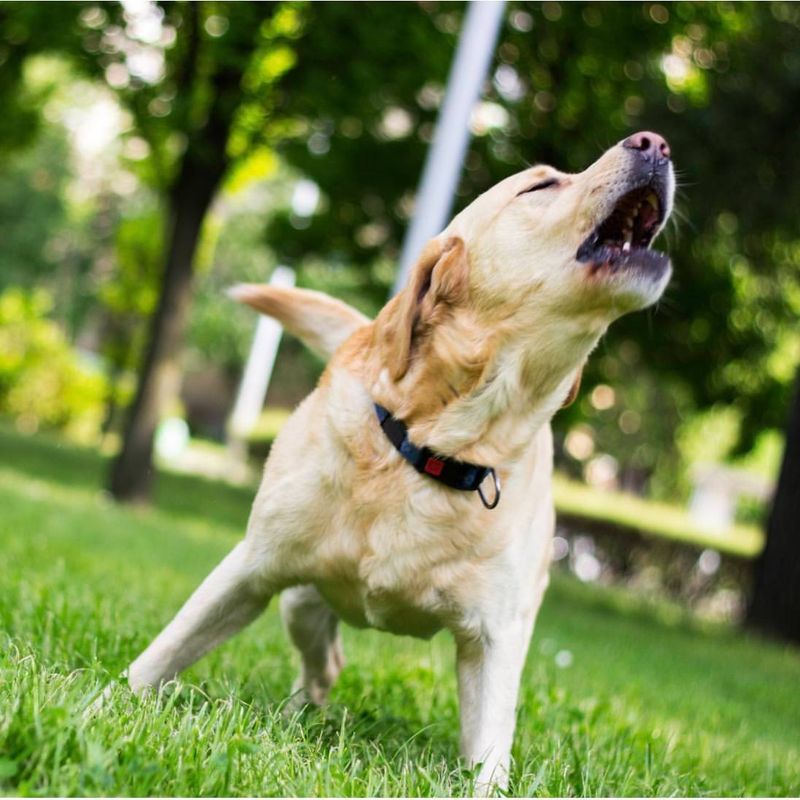Dogs, just like humans, can experience stress and anxiety. Recognizing the signs early can help you address their needs and ensure their well-being. In this blog post, we will explore twelve tell-tale signs that your dog might be stressed and provide actionable solutions to help them relax. From body language cues to changes in behavior, understanding these signs can lead to a happier, more relaxed pet.
Excessive Barking
Excessive barking can often signal a stressed dog. If your pup barks more than usual, it might be trying to communicate its discomfort. The reasons could be numerous, ranging from boredom to anxiety.
Try to observe when the barking peaks—is it during certain times or situations? Understanding the trigger can help you manage it better.
Consider providing more stimulation or toys, and ensure your dog gets enough exercise. This helps expend excess energy and can reduce stress levels significantly.
Destructive Chewing
Destructive chewing is a common stress indicator in dogs. When left alone or bored, a dog may resort to chewing items around the house.
This behavior not only damages your belongings but also indicates your pet’s unease. To address this, ensure your dog isn’t left alone for long periods without engagement.
Provide chew toys and engage in regular playtime. This redirects the chewing impulse towards acceptable objects, alleviating stress and ensuring a safe environment for your pet.
Panting and Drooling
Panting and drooling beyond the norm can be signs of stress in dogs. While typical after exercise or in warm weather, if persistent, it might indicate anxiety.
Take note of when these behaviors occur. Are they linked to specific events or environments? Identifying the cause is key to helping them relax.
Ensure your dog has a cool, comfortable place to rest. Calming music or aromatherapy can also create a soothing atmosphere, reducing stress significantly.
Aggression Towards Others
Aggression can be a strong indicator of stress in dogs. An otherwise friendly dog might suddenly start growling or snapping at others.
Understanding the root cause is vital. Is it due to fear, territoriality, or frustration? Identifying the trigger helps in managing their behavior appropriately.
Behavioral training and socialization in controlled environments can gradually ease aggression. Consulting a professional trainer might also be beneficial in addressing severe cases.
Loss of Appetite
A sudden loss of appetite can signal stress in dogs. If your dog isn’t eating as it used to, stress could be at play.
Consider recent changes in their routine or environment that might be affecting them. Ensuring a consistent schedule and environment often helps.
If the problem persists, consult a veterinarian to rule out any underlying health issues and provide guidance on dietary adjustments that might help.
Shaking or Trembling
Shaking or trembling can be typical in smaller breeds, but if it’s excessive, it might indicate stress.
Observe when your dog trembles—is it during specific events or in certain places? Pinpointing the trigger can aid in reducing stress.
Offer comfort and reassurance. Holding your pet close, wrapping them in a blanket, or even using calming dog jackets can provide security and help ease their anxiety.
Hiding or Avoidance
Hiding or avoiding people and other animals can suggest a stressed dog. If your dog is suddenly more reclusive, it might be overwhelmed or anxious.
Discover what triggers this behavior. Is it a new environment, visitors, or loud noises? Understanding helps you create a calmer atmosphere.
Provide safe spaces for your pet where they can retreat when needed. Gradual exposure to stressors and positive reinforcement can also help them feel more secure.
Excessive Licking
Excessive licking, especially of paws, can be a self-soothing behavior in stressed dogs. While grooming is natural, obsessive licking often indicates anxiety.
Monitor if your dog’s licking is causing irritation or injury. This behavior could stem from boredom, allergies, or stress.
Ensure your dog has plenty of mental and physical activities to engage in. Interactive toys and regular walks can redirect their focus and help mitigate stress effectively.
Pacing or Restlessness
Pacing or restlessness is often a visual cue of a dog’s stress. If your dog can’t seem to settle, it may be anxious or uneasy.
Evaluate recent changes in your dog’s routine or environment that might be unsettling them. Consistency can often help in calming them down.
Incorporate regular exercise and mental stimulation to help expend energy. Training exercises can also provide focus and reduce feelings of restlessness.
Excessive Sleeping
While dogs do sleep a lot, excessive sleeping might indicate stress or depression in your pet. If your dog is sleeping more than usual, it could be a sign of underlying stress.
Consider any recent changes in your household or routine. Providing a structured routine with regular exercise and interaction can boost their mood.
If the lethargy persists, consulting with a veterinarian is advisable to rule out health concerns and ensure your dog’s well-being.
Whining or Whimpering
Whining or whimpering is a vocal sign of stress in dogs. This behavior can occur in response to specific triggers like storms or separations.
Identifying the cause of your dog’s vocalization is crucial. Once identified, you can work on desensitization or provide comforting distractions.
Using white noise machines or providing a safe, cozy space can help minimize external stressors and soothe your pet’s anxiety.
Changes in Bathroom Habits
Accidents inside the home may indicate stress, especially if your dog is usually house-trained. Changes in bathroom habits can signal distress.
Assess any recent changes that might have triggered this behavior, such as a new pet or a move. Addressing these changes can help reset their routine.
Patience and positive reinforcement are key in guiding them back to their regular habits. Reestablishing a routine with regular outdoor breaks can also aid in reducing stress.












